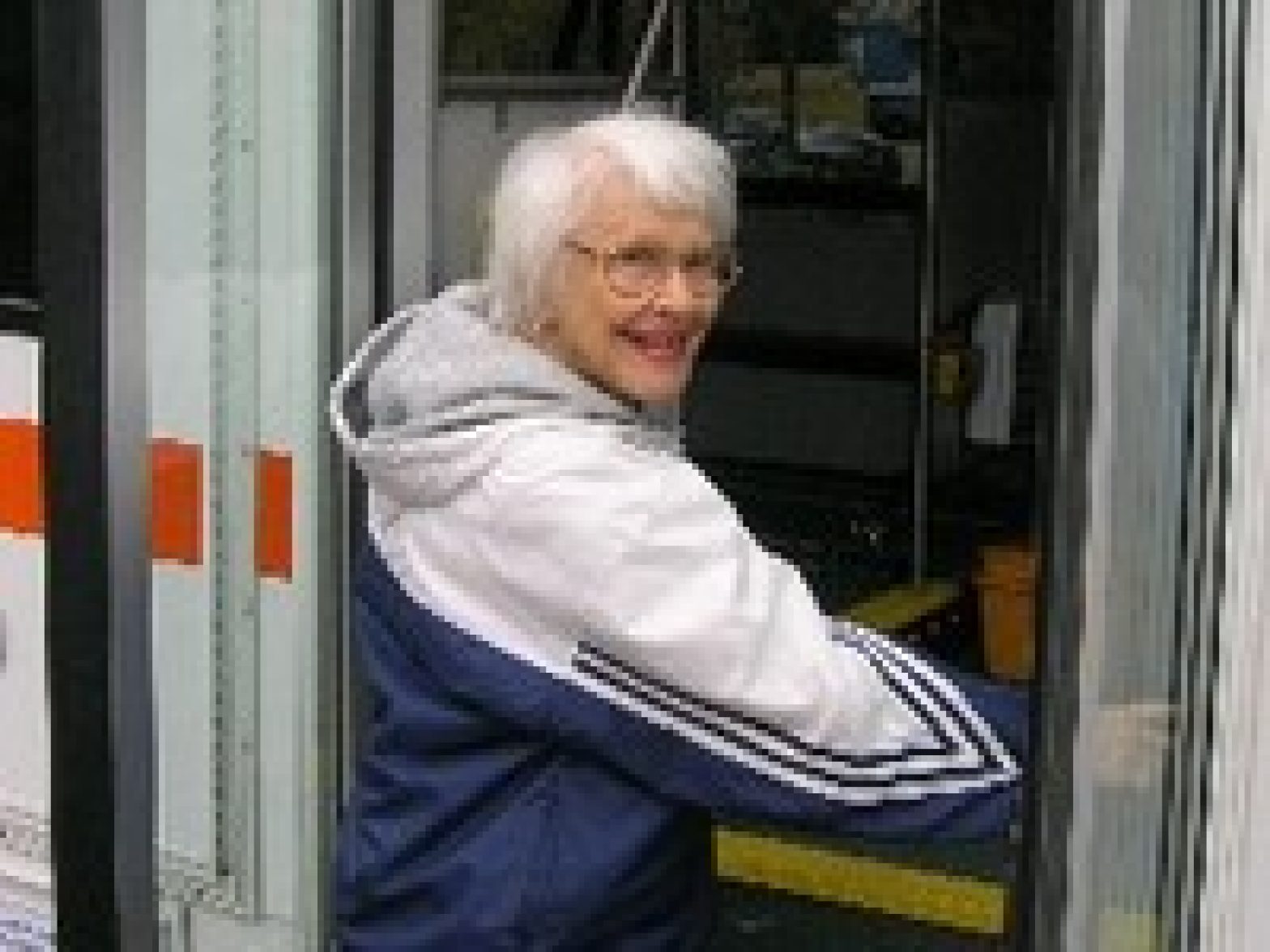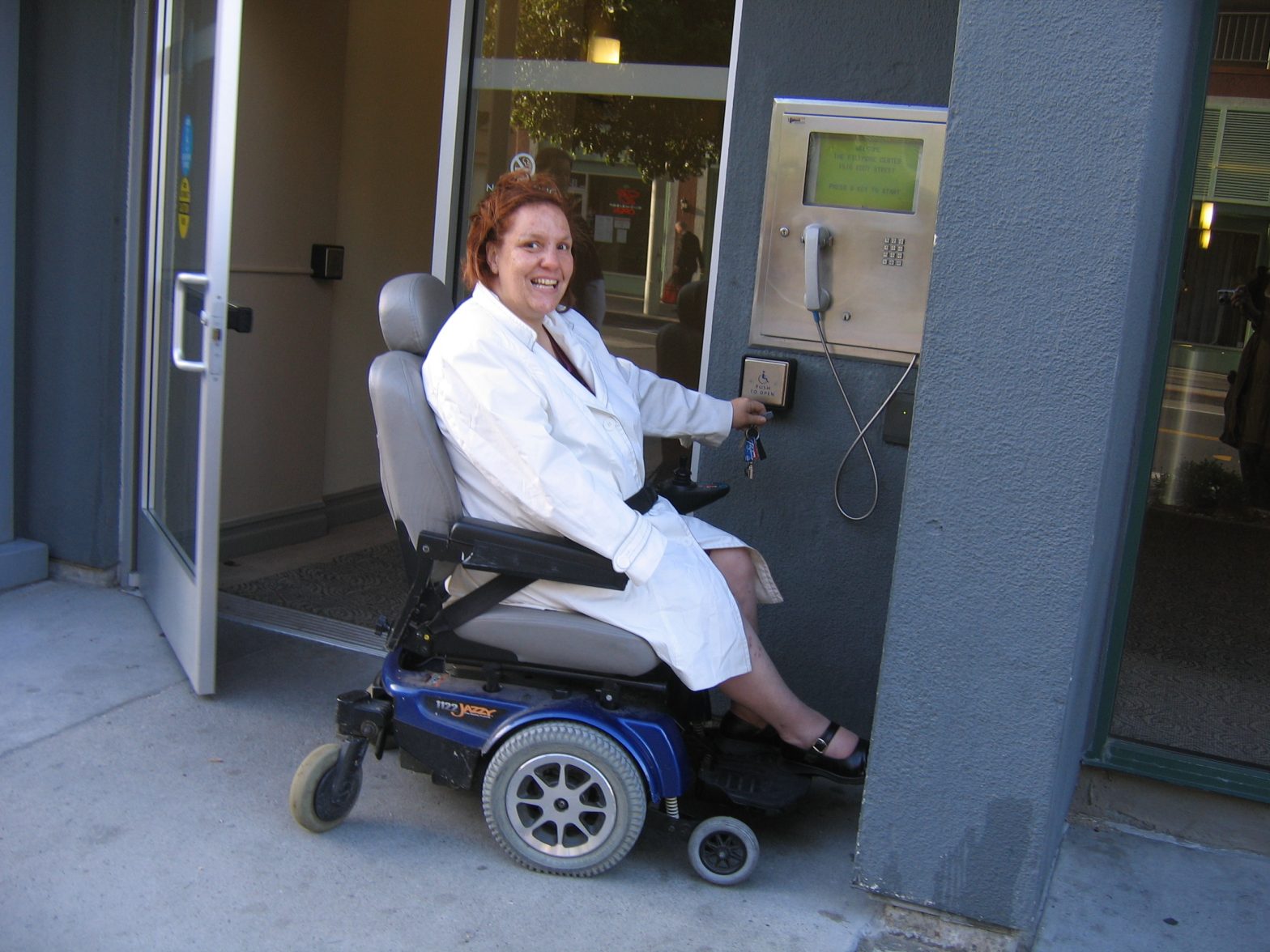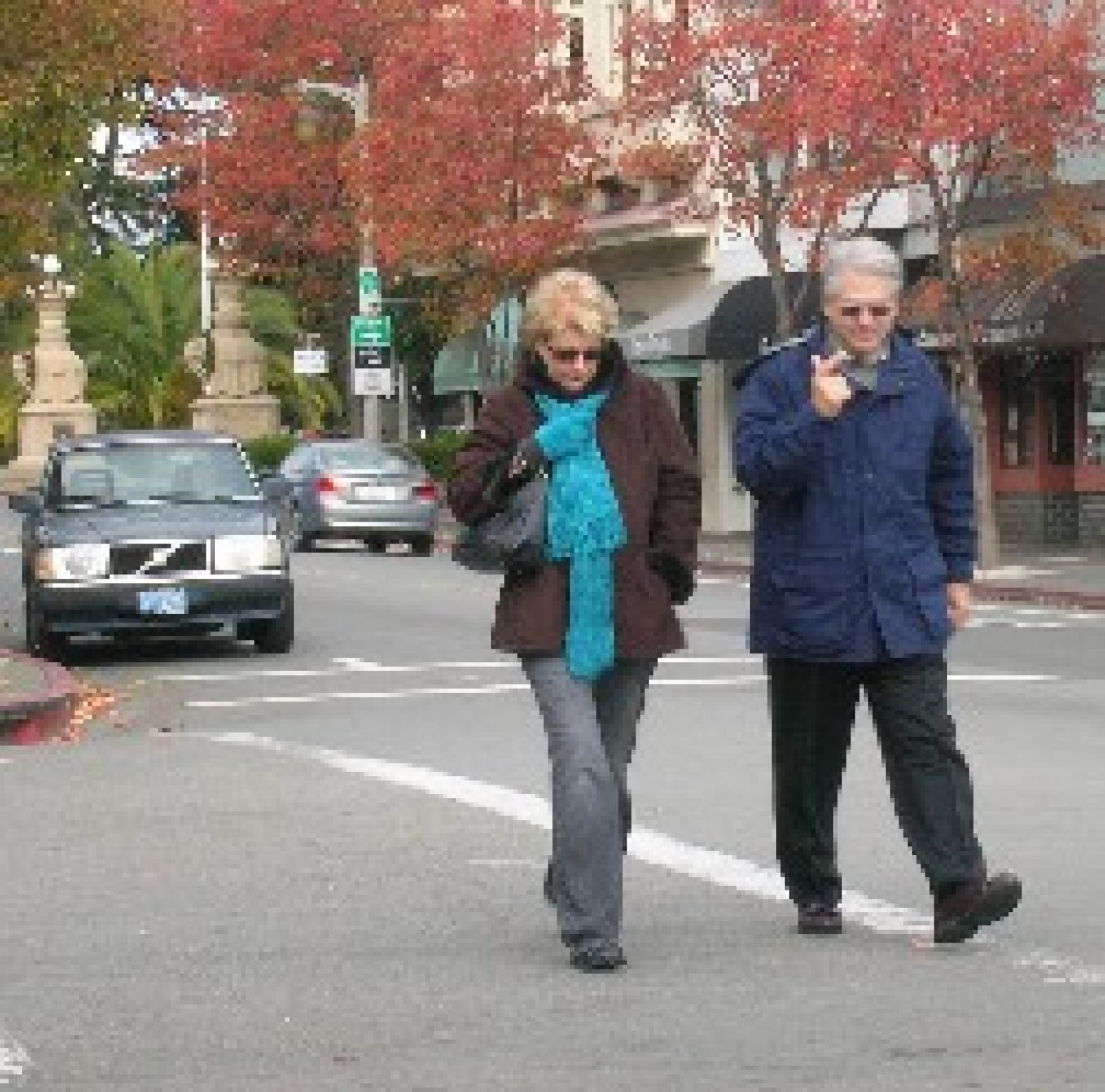By Cecily O’Connor, RedwoodAge.com
For almost a year, boomer Tricia Webb has enjoyed an automatic door at the front entrance of her San Francisco apartment building. She fought hard for that door. Webb, who sits in a wheelchair, lobbied her landlord for the door for five years, but her requests were denied due to cost. Tricia Webb led an effort to get an electric door that helps her neighbors, too. (CLC)
The effort finally gained momentum over a year ago when she became part of the Community Living Campaign (CLC), a group that support seniors and adults with disabilities. The CLC-sponsored a bake-sale that was attended by district supervisors and other civic leaders. The event "embarrassed (the landlord) so bad," that he eventually green-lighted the door, Webb said.
And that automatic entry has not only made Webb’s life easier, but also helped her neighbors, including parents with strollers.



